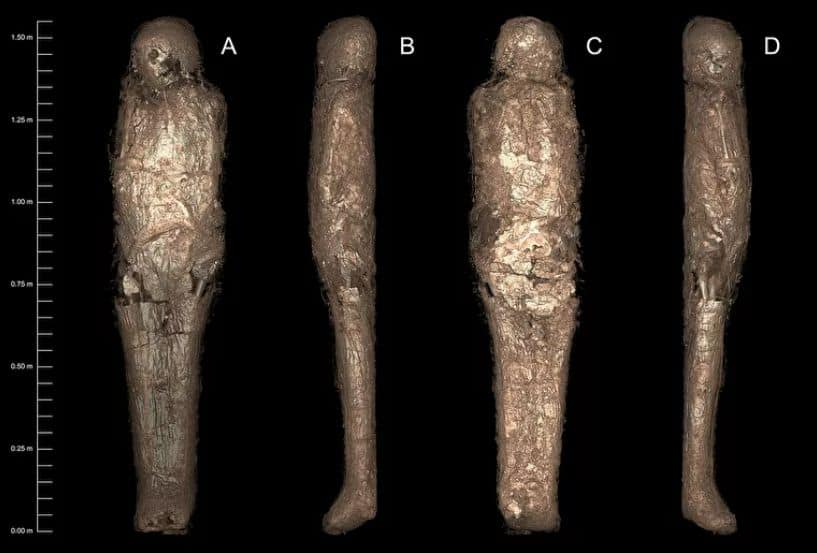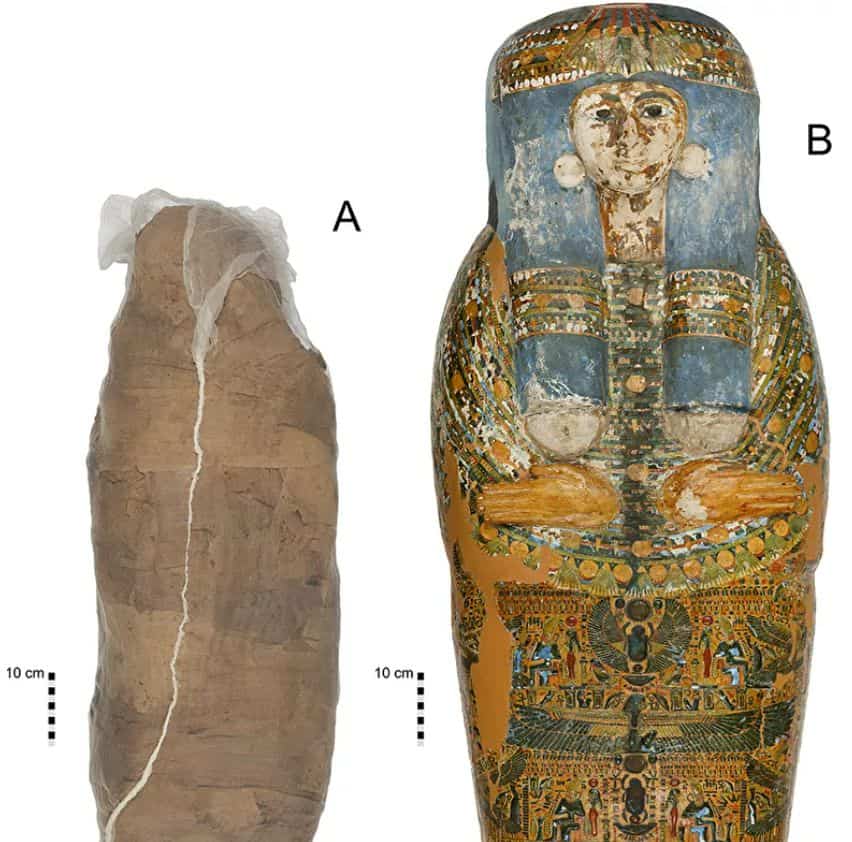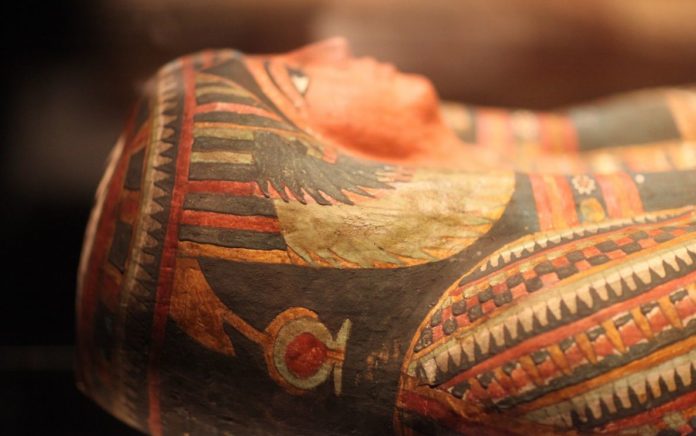Australian archaeologists discovered a rare Egyptian mummy wrapped in a mud shell instead of resin. The mummy underwent a post-mortem repair, and was placed in a foreign coffin that was intended for someone else.
Like many ancient Egyptian mummies, this mummy and its lidded coffin were acquired in the 19th century by a Western collector, Sir Charles Nicholson, an English-Australian politician who brought it to Australia. Nicholson donated them to the Museum of the University of Sydney in 1860, where they have been kept until now.
- Does This Mean We Stopped Being Animal and Started Being Human Due to ‘Copy Paste’ Errors?
- The One Lifestyle Choice That Could Reduce Your Heart Disease Risk By More Than 22%
- Aging: This Is What Happens Inside Your Body Right After Exercise
- Immune-Boosting Drink that Mimics Fasting to Reduce Fat – Scientists ‘Were Surprised’ By New Findings
- Gun Violence in America: What They Don’t Talk About at the Debate
Investigators revealed that the coffin is newer than the body buried in it. They suggest that local vendors tricked Nicholson into placing an unrelated mummified body in the coffin to sell a complete set, “a well-known practice in the local antique trade.”
The coffin is inscribed with the name of a woman – Meruah or Meru (t) ah – and dates from around 1000 BC, according to the iconography that decorates it, while the mummy dates from around 1207 BC. Therefore, the coffin is about 200 years more recent than the mummy it contains.
Although the individual is not Meruah, the anatomical evidence suggests that it is a woman who died between the ages of 26 and 35, according to the researchers.
Post-mortem repair and the clay shell
After her death, the woman was mummified and wrapped in tissue. Her remains, including her left knee and lower leg, were then damaged in “unknown circumstances”, possibly by grave robbers, prompting someone to repair her mummy. The repair likely took place within a generation or two of her first burial and included “rewrapping, packing and padding with textiles, and applying the clay shell,” the researchers wrote in the study.
Whoever repaired the mummy made a complicated sandwich, placing a mixture of mud, sand and straw between layers of linen wrappers. The lower part of the mud mixture had a base layer of a white calcite-based pigment, while its upper part was covered with ochre, a red mineral pigment, explained Karin Sowada, a researcher at the University’s Department of History and Archeology at Macquarie University in Sydney.
“Apparently, the mud was applied in sheets while it was still wet and flexible,” he explained. “The body was covered with linen wraps, the shell was applied and then more wraps were placed on top.”
- Does This Mean We Stopped Being Animal and Started Being Human Due to ‘Copy Paste’ Errors?
- The One Lifestyle Choice That Could Reduce Your Heart Disease Risk By More Than 22%
- Aging: This Is What Happens Inside Your Body Right After Exercise
- Immune-Boosting Drink that Mimics Fasting to Reduce Fat – Scientists ‘Were Surprised’ By New Findings
- Gun Violence in America: What They Don’t Talk About at the Debate
Later, the mummy was damaged again, this time to the right side of the neck and head. Since this affected all layers, including the mud shell, it appears that this damage was more recent and prompted the insertion of metal pins to stabilize the damaged areas at the time, the researchers said.
They specified that the mummy represents “a mortuary treatment not previously documented in the Egyptian archaeological record.”
The researchers also raised another hypothesis for the use of clay, indicating that it is a more affordable material compared to the resin that is normally used for mummification.
“The clay may also have been intended to emulate the practices used by the elite of society, who were sometimes mummified with imported resin-based materials over a period of nearly 350 years, from the late New Kingdom to the XXI Dynasty (around 1294 BC to 945 BC),” the researchers said.
As for the woman’s mud shell, “this is a truly new discovery in Egyptian mummification,” Sowada said. “This study helps build a broader—and more nuanced—picture of how the ancient Egyptians treated and prepared their dead.”
As for the clay shell of the woman, “this is a really new discovery in Egyptian mummification,” Sowada said. “This study helps build a broader – and more nuanced – picture of how ancient Egyptians treated and prepared their dead.”


- Does This Mean We Stopped Being Animal and Started Being Human Due to ‘Copy Paste’ Errors?
- The One Lifestyle Choice That Could Reduce Your Heart Disease Risk By More Than 22%
- Aging: This Is What Happens Inside Your Body Right After Exercise
- Immune-Boosting Drink that Mimics Fasting to Reduce Fat – Scientists ‘Were Surprised’ By New Findings
- Gun Violence in America: What They Don’t Talk About at the Debate
The research was published online in the journal PLOS One.
